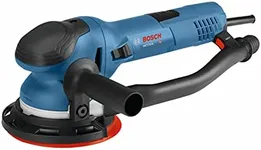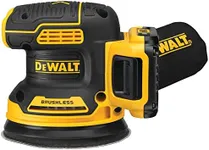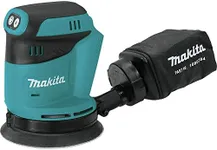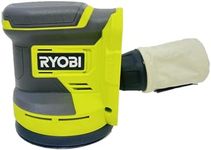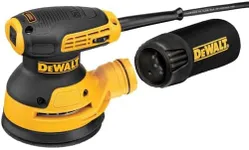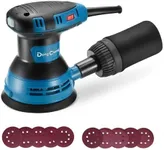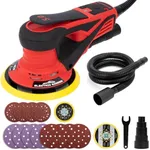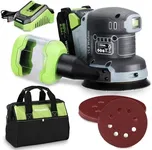Buying Guide for the Best Sanders For Wood Deck
Choosing the right sander for your wood deck is crucial to ensure a smooth, even finish and to make the job as easy and efficient as possible. Sanding a wood deck can be a big task, so it's important to select a sander that matches the size of your deck, the type of wood, and the condition of the surface. Here are some key specifications to consider when selecting a sander for your wood deck, along with explanations to help you make the best choice for your needs.Type of SanderThere are several types of sanders available, including belt sanders, orbital sanders, and drum sanders. Belt sanders are powerful and great for removing a lot of material quickly, making them ideal for large, rough decks. Orbital sanders are less aggressive and provide a smoother finish, suitable for smaller decks or for finishing work. Drum sanders are heavy-duty and best for very large decks or professional use. Choose a belt sander for heavy-duty work, an orbital sander for general use, and a drum sander for extensive, professional projects.
Power SourceSanders can be powered by electricity (corded), batteries (cordless), or even air (pneumatic). Corded sanders provide consistent power and are ideal for large jobs where you have access to an electrical outlet. Cordless sanders offer more mobility and are great for smaller decks or areas without easy access to power. Pneumatic sanders require an air compressor and are typically used in professional settings. For most homeowners, a corded or cordless sander will be the best choice depending on the size of the deck and the availability of power sources.
Sanding Surface AreaThe size of the sanding surface area affects how quickly you can cover the deck. Larger sanding surfaces can cover more area in less time, making them ideal for big decks. Smaller sanding surfaces are better for detailed work and getting into tight spaces. If you have a large deck, look for a sander with a larger sanding surface to save time. For smaller decks or detailed work, a sander with a smaller surface area will give you more control.
Dust CollectionSanding can create a lot of dust, which can be harmful to breathe and messy to clean up. Many sanders come with built-in dust collection systems that capture dust as you work. Some have bags, while others can be connected to a vacuum. A good dust collection system will keep your work area cleaner and reduce the amount of dust you inhale. If you are working in an enclosed space or are concerned about dust, choose a sander with an effective dust collection system.
Speed ControlVariable speed control allows you to adjust the speed of the sander to match the task at hand. Higher speeds are great for removing material quickly, while lower speeds are better for finishing and detailed work. Having the ability to control the speed can make the sander more versatile and easier to use on different parts of the deck. If you need flexibility in your sanding tasks, look for a sander with variable speed control.
Weight and ErgonomicsThe weight and design of the sander can affect how comfortable it is to use, especially for extended periods. Heavier sanders can be more tiring to use but may offer more stability and power. Lighter sanders are easier to handle and maneuver. Ergonomic designs with comfortable grips can reduce fatigue and make the sander easier to control. Consider how long you will be using the sander and choose one that feels comfortable and manageable for you.


